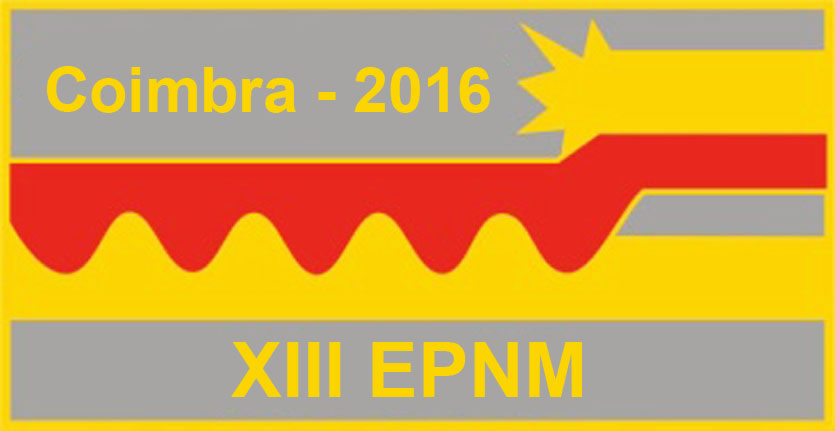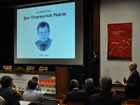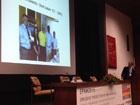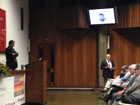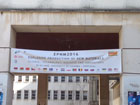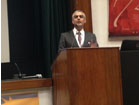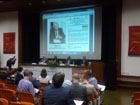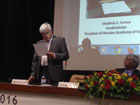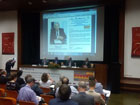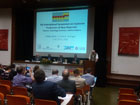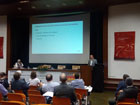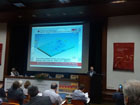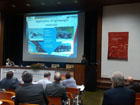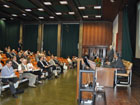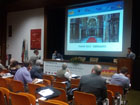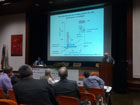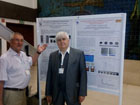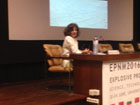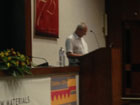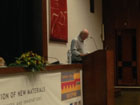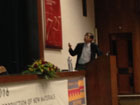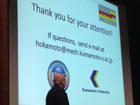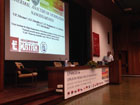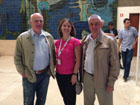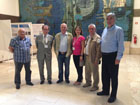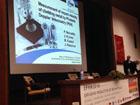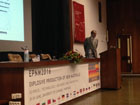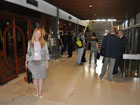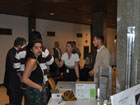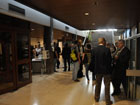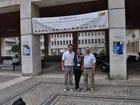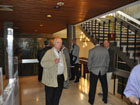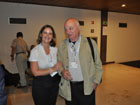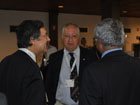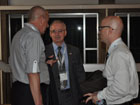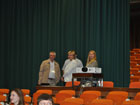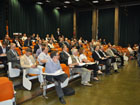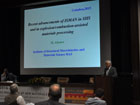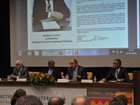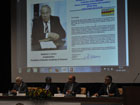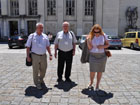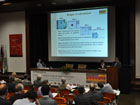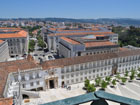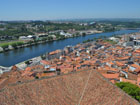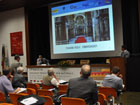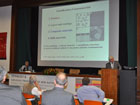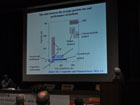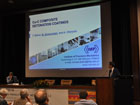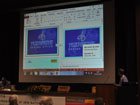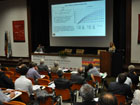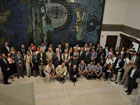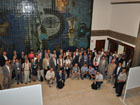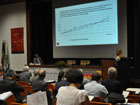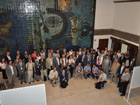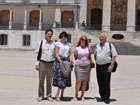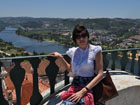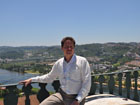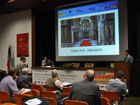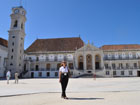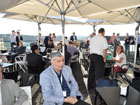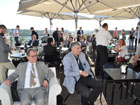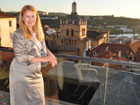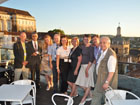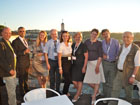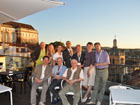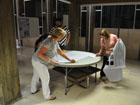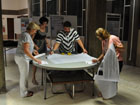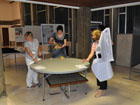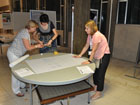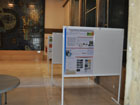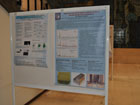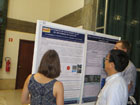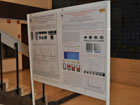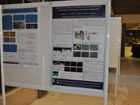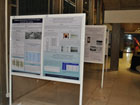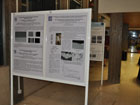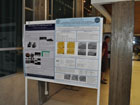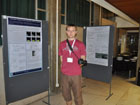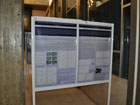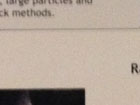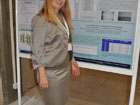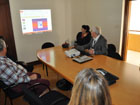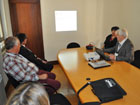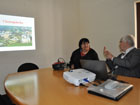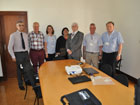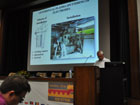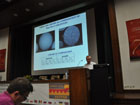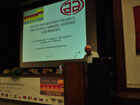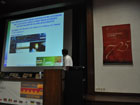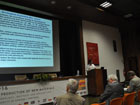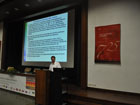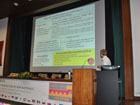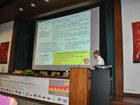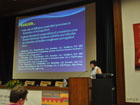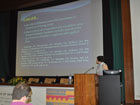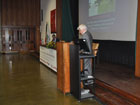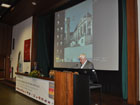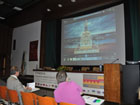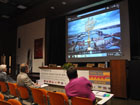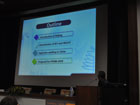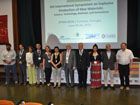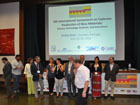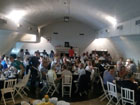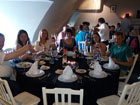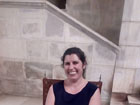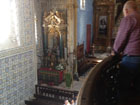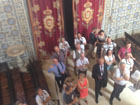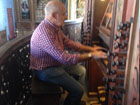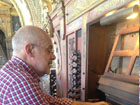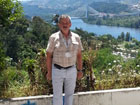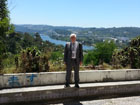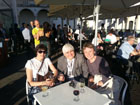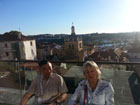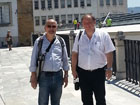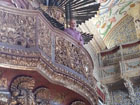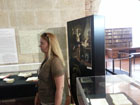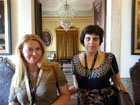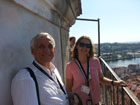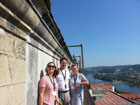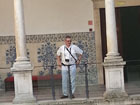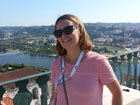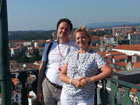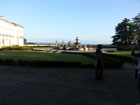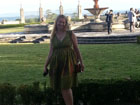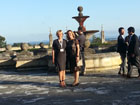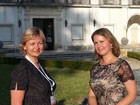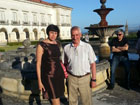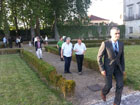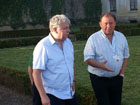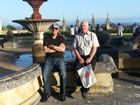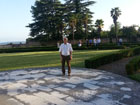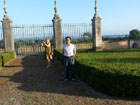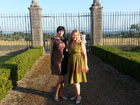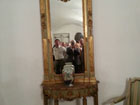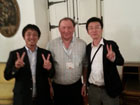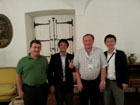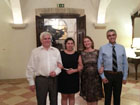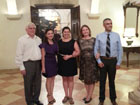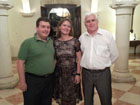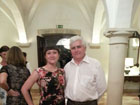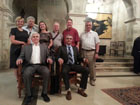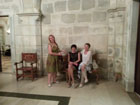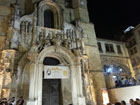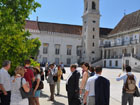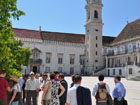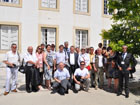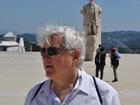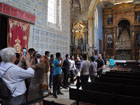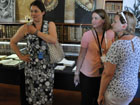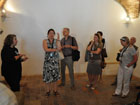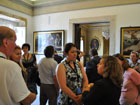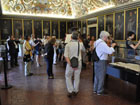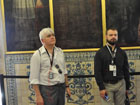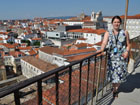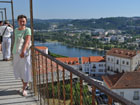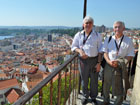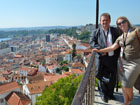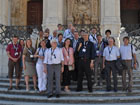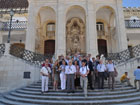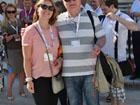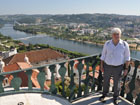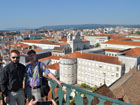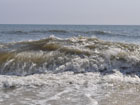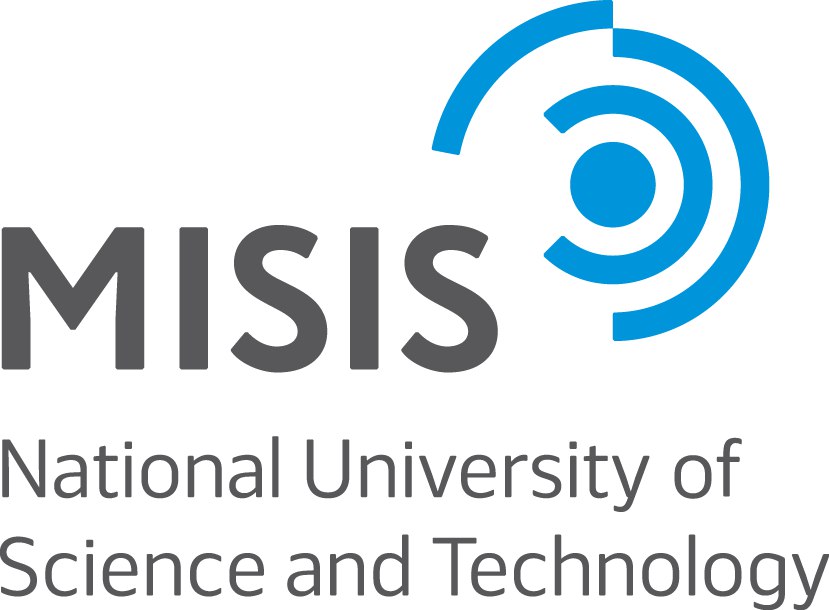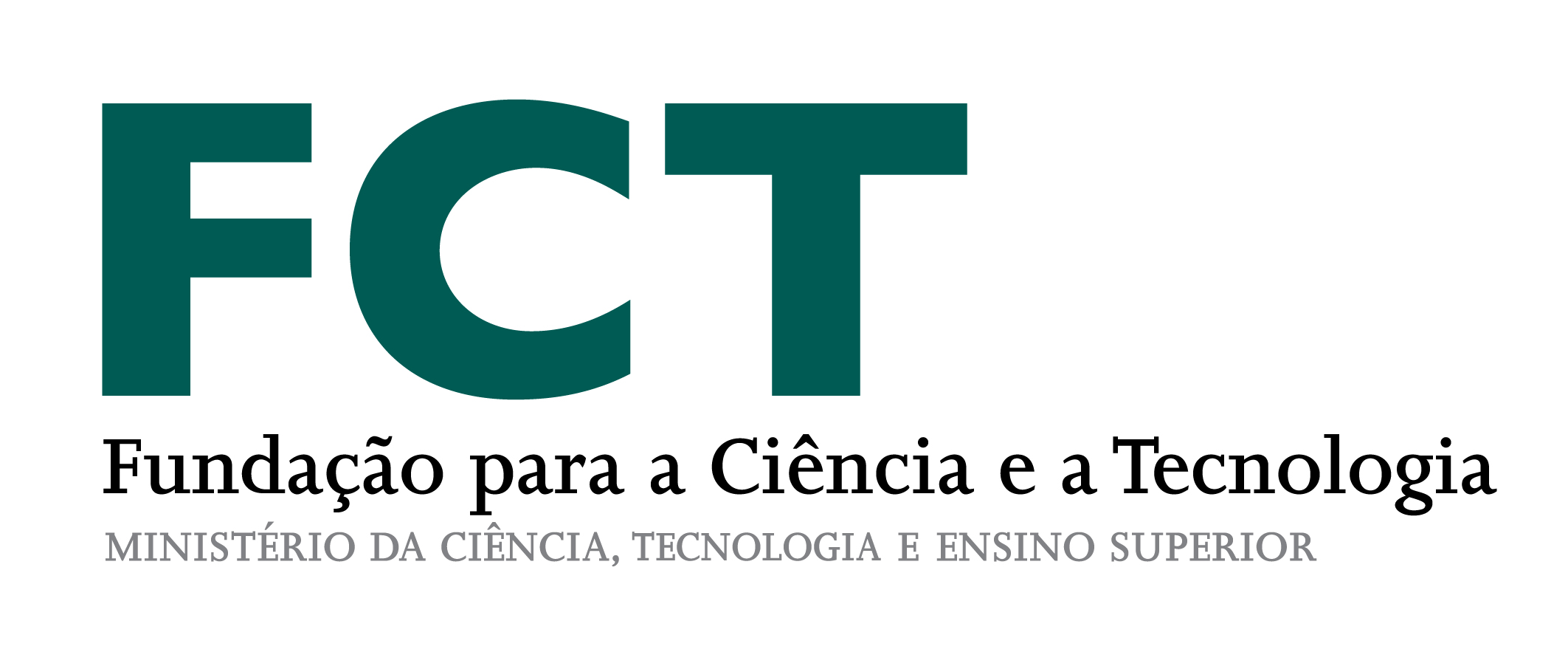Final Report
General
XIII International Symposium on Explosive Production of New Materials: Science, Technology, Business, and Innovations (EPNM-2016) held in Coimbra, Portugal, June 20–24, 2016 was organized by the Institute of Structural Macrokinetics and Materials Science, Russia and the Association for Development of Industrial Aerodynamics (ADAI) at the University of Coimbra, Portugal.
EPNM-2016 gathered above 100 experts from Russia, Portugal, Poland Great Britain, Germany, the Netherlands, Ukraine, Czechia, Slovakia, Georgia, USA, China, and Japan. We were pleased to greet the newcomers, participants from Island, Romania, and Armenia.
We, participants, deeply appreciate the financial support from our sponsors: NobelClad Co. (USA), EnergoMetall (Russia), Explomet (Poland), National University of Science and Technology MISiS (Russia), Ordem dos Engenheiros (Portugal), Portuguese National Funding Agency for Science, Research, and Technology, and Office of Naval Research, Science, and Technology (USA).
At the opening ceremony, words of greeting came from Prof. Ricardo Mendes (Portugal), Prof. Mikhail Alymov (Russia), Prof. Xavier Viegas (Portugal), and Prof. Luis Menezes (University of Coimbra). The greetings from Prof. V.E. Fortov, President of Russian Academy of Sciences, and Prof. A.A. Deribas, one of the founding fathers of explosive welding, who could not come personally, were read out aloud.
A special presentation was made in the memory of Dr. Igor Plaksin (08.09.1954–08.05.2016) who had worked at the University of Coimbra for over 20 years and took active part in organizational activities for EPNM-2016.
At the sessions, there were 60 oral and 23 poster presentations. Gratifying is the participation of rather numerous younger researchers, especially from Poland. Our special thanks to Prof. William Proud (Institute of Shock Physics, Imperial College London) and Prof. Rolf Prümmer (Germany) who found a possibility to come and deliver their plenary lectures.
Scientific Program
First of all, worth mentioning is a high level of research carried out at the Laboratory of Energetic and Detonics (LEDAP) and Department of Mechanical Engineering at the University of Coimbra. L. Rodrigues spoke about the use of optical fibers in monitoring the detonation parameters in solid explosives (I. Plaksin, L. Rodrigues, R. Mendes, et al. Experimental metrology and techniques for sub-millimeter optical observation of detonation reaction phenomena and performance evaluation of crystalline explosives). University researchers are using emulsion high explosives with hollow micro spheres in explosive welding (G. Carvalho, R.M. Leal, I. Galvao, et al. Explosive welding of aluminum and copper: Effect of base plate material). Such explosives are promising for use in the so-called ‘delicate’ explosive welding of thin sheets (<1 mm) to a base plate; as well as the PETN/soda and RDX/soda explosive mixtures suggested by A. Deribas et al. with a detonation velocity of about 2.3 km/s and applicable to the welding of sheets 3–24 mm thick. Interesting results were reported on the use of synchrotron radiation in detonation studies (K. Ten, E. Pruuel, A. Kashkarov, et al. Detonation parameters of low-density PETN an RDX based high explosives). This unique method affords the elucidation of detonation parameters and plotting the equation of state for matter behind the detonation wave. Original approach to determining the velocity of clad plate was suggested by P. Nesvadba (P. Nesvadba, J. Kucera, M. Kunzel, J. Pachman. Impact velocity of cladding metal as measured by photonic Doppler velocimetry).
Practical aspects of industrial-scale explosive welding were discussed by С. Prothe (DMC Nobel Clad) (C. Prother, C. Hurley, J. Banker, and S. Liu. Comparative tensile strength and shear strength of explosion clad materials); V. Vakin (EnergoMetall) (V. Vakin, A. Krasilnikov. Explosive welding of extra-large clad plates: Dynamic features); О. Pervukhina (O. Pervukhina, I. Schastlivaya, A. Fedorov, et al. Tensile strength of weld seam in exploclad steel/Ti sheets), at el.
Prof. R. Prümmer gave a historical retrospective for various lines of research in the field (R. Prümmer. Constructive applications of shock waves: Importance of detonation velocity). Of key importance was the lecture by W. Proud on the behavior of powdered materials under dynamic loading (W. Proud. Granular materials under shock, ballistic, and blast loading). A current trend is the design of light-weight high-strength materials (M. Nejwer, G. Kwiatkowski. Strength properties of Al2519/Ti6Al4V bimetal fabricated by explosive welding) and multilayer Ti/Al composites (Z. Wilk, P. Koslik, A. Galka. Research of protective multilayer titanium and aluminum system for cumulative jet).
А.Е. Rosen reported on improving the service life of containers for repository of liquid radioactive wastes via the use of multilayer clad sheets with alternating high and low electrochemical potential (V. Grachev, A. Rosen, G. Kozlov, et al. Exploclad multilayer materials with enhanced service life for repository of liquid radioactive wastes).
K. Hokamoto suggested an elegant method for fabrication of porous structures with unidirectional pores (K. Hokamoto. A new method to make unidirectional porous structure by explosive welding technique). A. Bogunov reported on the use of Stoneley waves for monitoring the integrity of weld seams (V. Sel’sky, A. Sel’sky. Prospects for using Stoneley waves in monitoring the quality of clad metals). H. Yin reported on the synthesis of graphene by shock-assisted decomposition of dry ice (H. Yin, Q. Du, and P. Chen. Shock wave synthesis of multilayer graphene from dry ice). M. Baranowski spoke about the deposition of Cu–C coatings by by detonation sputtering (T. Babul, M. Baranowski, A. Olbrycht. Composite Cu–C coatings). V. Efremov presented the temperature for transition of detonation diamond into graphite (V. Efremov, E. Zakatilova, I Maklashova, et al. Thermal analysis of detonation nanodiamonds).
Special section was dedicated to fabrication of composite materials by SHS method. Prof. M. Alymov talked about recent advances of ISMAN in combustion synthesis and shock-assisted processing of materials (M. Alymov. Recent advancements of ISMAN in SHS and explosion/combustion-assisted materials processing). J.T. Li reported on synthesis of multicomponent alloys and thermoelectric materials in centrifugal machines (J. T. Li, Z. C. Yang, and G. G. Liu. Combustion synthesis of high-entropy alloys and thermoelectric materials). V.I. Yukhvid presented a promissory process for fabrication of spherical granules 100–125 µm in diameter for use in additive technologies (V.I. Yukhvid, D.E. Andreev, V.N. Sanin, et al. SHS-produced TiAl cast alloys for additive manufacturing technologies). Circumstantial presentation was made by V.N. Sanin who talked about SHS-production of high-entropy alloys for high-temperature applications (V.N. Sanin, D.M. Ikornikov, D.E. Andreev, et al. Self-propagating high-temperature synthesis of cast high-entropy alloys based on 3d and 4d elements).
There was also a lot of other exceeding interesting presentations that were not mentioned here simply for the sake of brevity.
Social Program
A guided tour over the University of Coimbra involved the sightseeing of ancient Cathedral of Santa Cruz, King Palace Alcacova, Joanine Library, and Santa Cruz bell tower. The attendants had also a bus trip to the resort town Figueira da Foz on the Atlantic coast. Well-organized was a farewell dinner at the Palácio de S. Marcos with the ensemble of Coimbra University performing guitar music and national fado songs.
Acknowledgments
On behalf of participants, we would like to express huge gratitude to the following members of the working group for this forum: Prof. R. Mendes, Prof. M.I. Alymov, Prof. А.А. Deribas, Dr. A.E. Sytschev, Prof. J. Ribeiro, Dr. Yu.B. Scheck, Prof. C. Santos, Prof. A. Loureiro, Prof. A. Pires, Mrs. O.V. Amelina, Ms. A. Ramos, and Mrs. О.О. Likhanova.
A host of the oncoming XIV EPNM Symposium—St. Petersburg, Russia or Beijing, China—will be announced this autumn.
А.А. Shtertser
О.О. Likhanova
